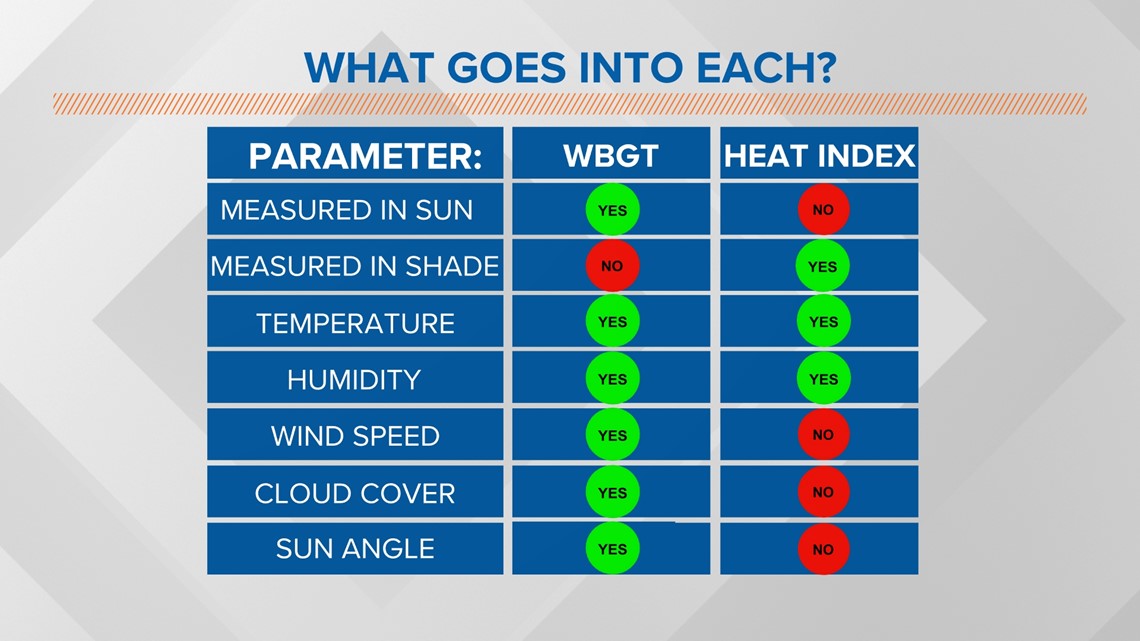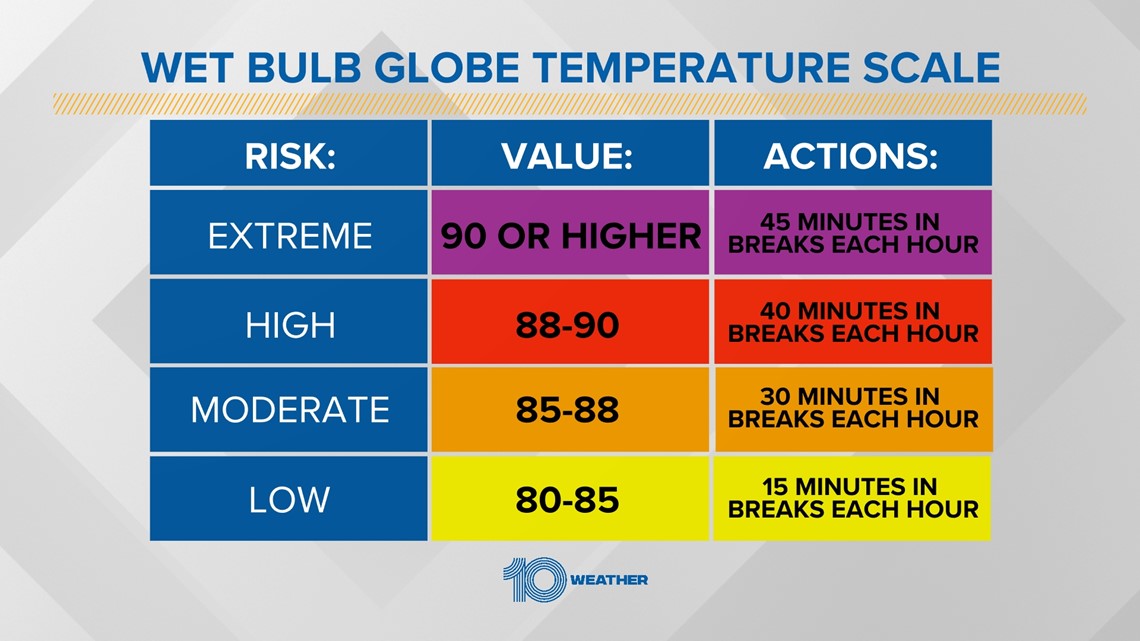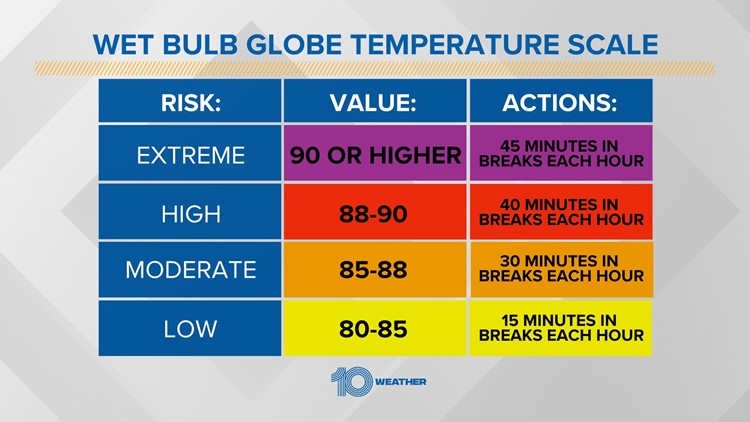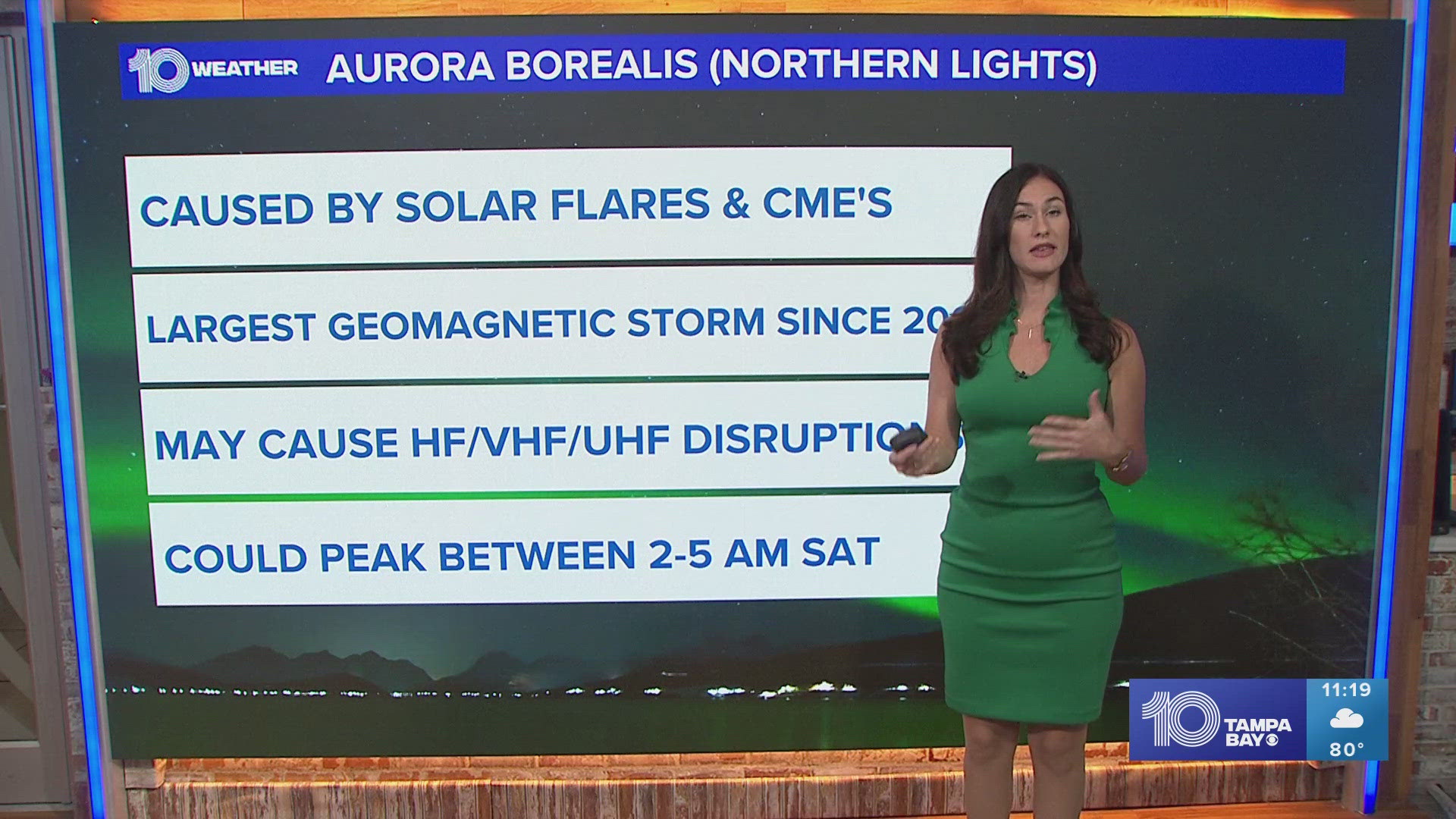ST. PETERSBURG, Fla. — Heat produces the highest number of weather-related fatalities each year. In fact, over the last 30 years, on average, heat has killed more people in the United States than lightning, tornadoes and hurricanes combined!
The heat index is the most common value used by meteorologists to explain how hot it feels outside when you factor in the temperature and humidity. But the heat index has its flaws — it only lets you know what it feels like in the shade.
The heat index doesn't take into account cloud cover, sun angle and wind speed. All of that can have an impact on our bodies when we spend long periods of time outside which is why the wet-bulb globe temperature (WBGT) is looking to fill that gap.


The WBGT can help athletes and outdoor workers determine how much work or exercise, in direct sunlight, is safe before their bodies become over-stressed.
The scale can be confusing if you're used to the heat index. We know that heat index values over 108 degrees will prompt heat advisories across our area. But what is the scale for the wet-bulb globe temperature and what is a dangerous level?


Anything less than 80 degrees is considered safe for working and exercising outside. Once the WBGT gets into the 80s is when our bodies become more at risk with recommended breaks every hour. On the high end of the scale will be WBGT above 90 degrees, which is when long breaks should be given to athletes or workers.
At that level, it is suggested that for every 15 minutes of work you take at least 45 minutes of breaks each hour.
So, let's compare the two to show the difference!
Let's say the temperature is 95 degrees and the dew point is 75 degrees. That is all you need to calculate the heat index, which will always be 107 degrees no matter what the cloud cover and wind speeds are.
Now let's keep the temperature and dew point the same but change the wind speed and cloud cover.
If winds are 0 mph and cloud cover is 0%, the WBGT is 91 degrees. That is on the extreme side of the spectrum! Now if the winds are 15 mph and cloud cover is 80%, the WBGT is 85 degrees. A lot more manageable!


So while the heat index stays the same even with a change in wind speed and cloud cover, the WBGT changes 6 degrees. With a WBGT of 85 degrees, you only need 15 minutes of breaks each hour. But with a WBGT of 91 degrees, you need 45 minutes of breaks each hour.
The WBGT can be a great resource for high school and college athletics, outdoor manual labor companies and other outdoor events. Coaches can use this information to determine how long and hard a training session should be.


